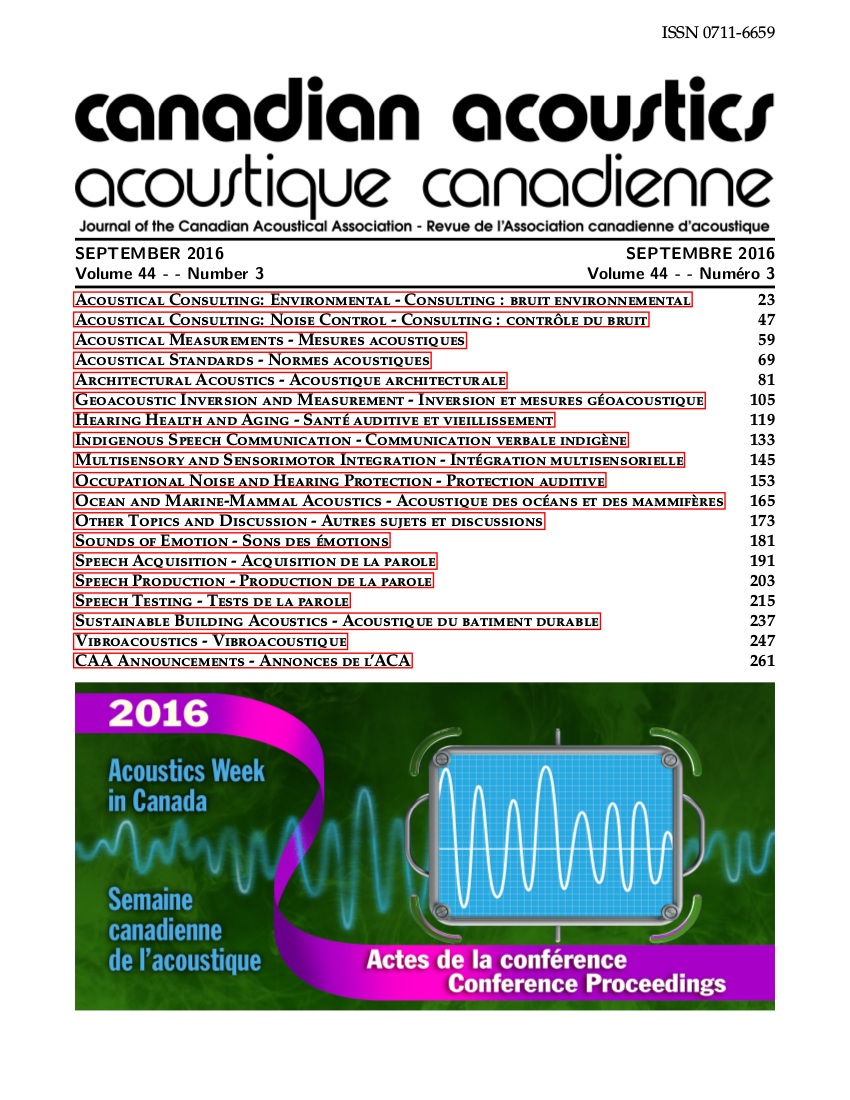Ear canal deformations by various earplugs: An in situ investigation using MRI
Abstract
To be efficient, an Hearing Protection Device (HPD) should be worn during the time the workers are exposed to high level noises in order to protect them against hearing losses or deafness hazards. Several reasons like the difficulty to communicate, aesthetic considerations or discomfort issues prevent the workers from wearing HPDs properly. In the past, some indicators of physical (static pressure on the ear canal walls) and auditory (insertion loss, occlusion effect) discomfort induced by earplugs have been assessed using numerical models. However, most of these models rely on the assumption that the shapes of the open and occluded ear canal are identical which has never been demonstrated experimentally. As the recent rise of medical imaging and numerical computing technologies allows for reconstructing the 3D geometry of the outer ear, this study proposes to investigate the validity of this assumption. The shapes of the open and occluded ear canal of a human subject were obtained using high-resolution magnetic resonance imaging. Several kinds of earplugs were tested. Their non deformed shapes were obtained thanks to preliminary measurements. In each case the qualitative (from a radiologist assessment) and quantitative (from deformation measurements) comparison between the reconstructed occluded and open ear canal was carried out to evaluate whether and how both earplugs and ear canal deform. The deformation of earplugs and tissues of the ear canal provides useful information to investigate how each earplug and skin should be modelled and characterized mechanically in order to predict the earplug sound attenuation and occlusion effect.Additional Files
Published
How to Cite
Issue
Section
License
Author Licensing Addendum
This Licensing Addendum ("Addendum") is entered into between the undersigned Author(s) and Canadian Acoustics journal published by the Canadian Acoustical Association (hereinafter referred to as the "Publisher"). The Author(s) and the Publisher agree as follows:
-
Retained Rights: The Author(s) retain(s) the following rights:
- The right to reproduce, distribute, and publicly display the Work on the Author's personal website or the website of the Author's institution.
- The right to use the Work in the Author's teaching activities and presentations.
- The right to include the Work in a compilation for the Author's personal use, not for sale.
-
Grant of License: The Author(s) grant(s) to the Publisher a worldwide exclusive license to publish, reproduce, distribute, and display the Work in Canadian Acoustics and any other formats and media deemed appropriate by the Publisher.
-
Attribution: The Publisher agrees to include proper attribution to the Author(s) in all publications and reproductions of the Work.
-
No Conflict: This Addendum is intended to be in harmony with, and not in conflict with, the terms and conditions of the original agreement entered into between the Author(s) and the Publisher.
-
Copyright Clause: Copyright on articles is held by the Author(s). The corresponding Author has the right to grant on behalf of all Authors and does grant on behalf of all Authors, a worldwide exclusive license to the Publisher and its licensees in perpetuity, in all forms, formats, and media (whether known now or created in the future), including but not limited to the rights to publish, reproduce, distribute, display, store, translate, create adaptations, reprints, include within collections, and create summaries, extracts, and/or abstracts of the Contribution.


